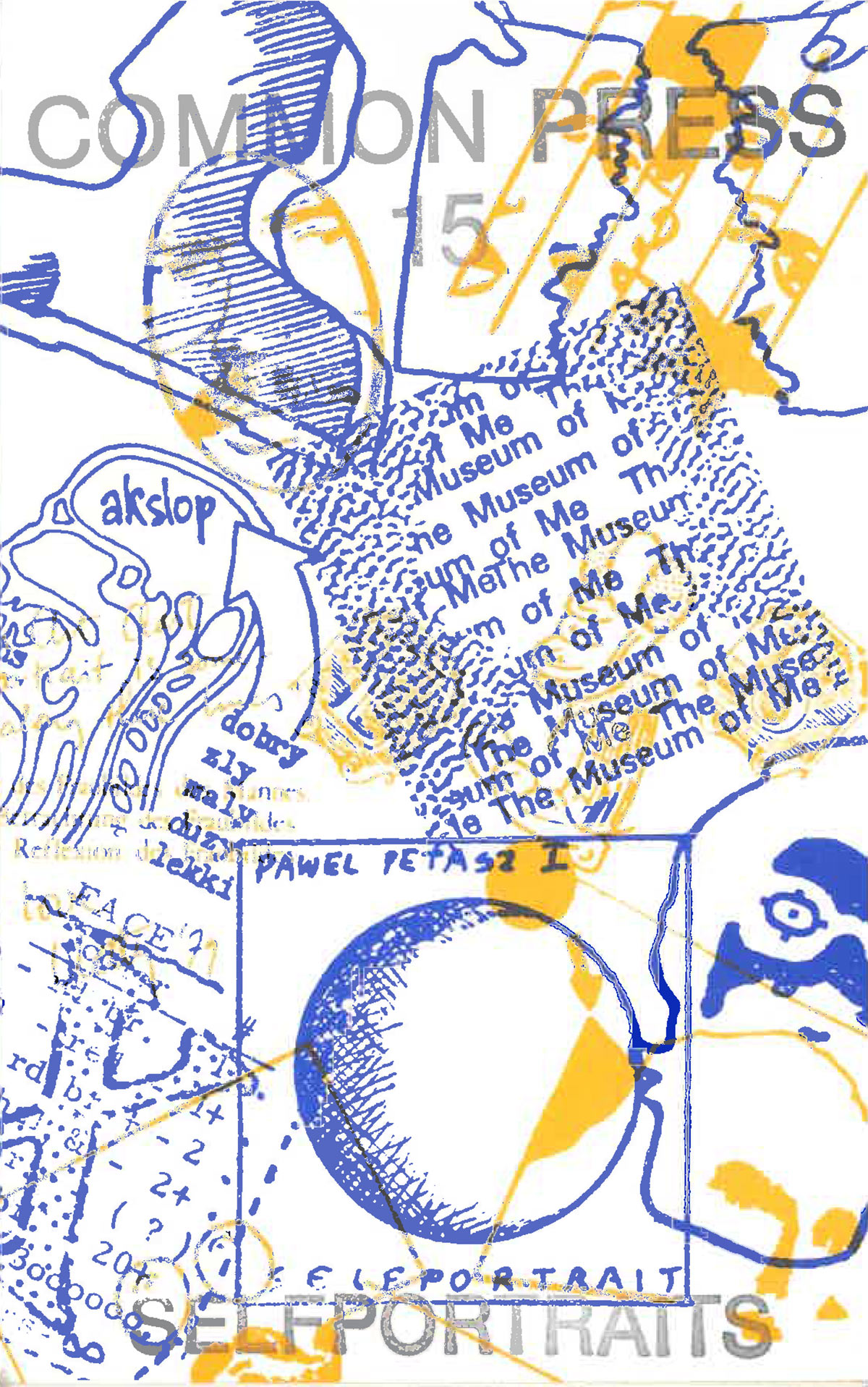Guy Bleus: What is Commonpress?
Bleus, Guy: What is Commonpress?, in: Commonpress No. 56. Commonpress Retrospective, Administration Center, Wellen, Belgium - Museum het Toreke, Tienen, Belgium, September, 1984, pp. 106–108. (Ed. By Guy Bleus)
III. Commonpress - Retrospective : 1977 - 1984
III.1. What is Commonpress? (about commonpress) (CP)
III.2. Introduction by Paweł Petasz (Poland).
III.3. Introduction by Gerald X. Jupitter - Larsen (Canada)
CP is not a "common" art-magazine. It is a special one, because it is "common". Created, produced and distributed by and to its participants each edition has a different editor.

Work by Paweł Petasz, in: Commonpress No. 34, Habitat’s Range, BWA + ZPAP, Suwalki, Poland, 1980, 113 p. (Ed. by Wieslaw Osewski)
This almost seven years young artists-magazine has its own origin and evolution. The father and motor of CP is the Polish artist Paweł Petasz, who started this new art-medium, this remarkable art-forum and art-form in December 1977 (publication of the first edition). The short history of the magazine is closely related to the fast development of Mail-Art as a global movement. As the first threads of the Mail-Art-Web, CP started small.
But this international small-press magazine with only 17 participants in the first edition had a solid concept. One can read in the first issues the participating rules which e.g. "obliged" every contributor to print and distribute an edition once. This sounds severe, but is was a democratic principle, necessary for the survival of the alternative magazine and not insurperable to fix with only a decade of participating artists.
The succession of the different editions passed off quickly: almost sixty planned editions in seven years. But personal and social complications sometimes hampered the publications. Some artists with personal problems could not edit the planned issue yet. Besides there was (and is) the enormous growth of the number of contributors to each edition which increases the problems of financing and sponsorship.
On the other hand the sinister political climate in Poland in 1981 (with military censorship of the mail) obliged Paweł Petasz to transfer the coordination of CP to Gerald X. Jupitter-Larsen in Canada. And today he is still doing so. His address for information and assignment (if you wish to do an issue) is: P.O. BOX 48 – 184, Vancouver, BC V7X IN8 Canada. The general prescription sounds: "Anything can be a CP. Print no less than 200 copies (depending on the number of contributors), give a free copy to all the participants, use all of the contributions you get, keep in mind printing and mailing costs when setting size limits for contributions, name it CP N°... and indicate a theme". In the introduction of Paweł Petasz, specially written for this edition, he describes more precisely the regulations to do a CP-edition.

Cover of Commonpress No. 15, Selfportraits, Stempelplaats, Amsterdam, Holland, September, 1979, 59 p. (Ed. by Aart van Barneveld)
Anyway, each contributor or reader is "encouraged" to organize a future edition. But doing so means also assuming the responsibility of the subject or theme, size, deadline, reproduction process and distribution. It is a privilege for every mail-artist to do so.
